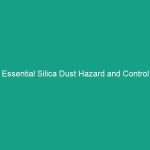Good Morning Team!
Today, we’re going to discuss a critical topic that affects all of us: Essential Guidelines to Identify and Manage Psychosocial Hazards. Understanding psychosocial Hazards is vital for maintaining a healthy workplace and ensuring the well-being of every team member. By the end of this talk, you’ll have practical strategies to recognize and mitigate these hazards, making our work Environment safer and more supportive.
Understanding Psychosocial Hazards
So, what exactly are psychosocial hazards? In simple terms, these are aspects of work design, organization, and management that have the potential to cause psychological or physical harm. Common examples include excessive workloads, lack of control over work activities, and poor relationships among coworkers.
These hazards are not just abstract concepts; they can significantly impact your daily operations and overall job satisfaction. If left unaddressed, psychosocial hazards can lead to stress, burnout, anxiety, and even physical health issues. It’s crucial to recognize that the mental health of our employees is just as important as their physical Safety.
There’s a common misconception that psychosocial risks only concern a few individuals. In reality, they can affect anyone in the workplace, and addressing them Benefits the entire team. When we create a supportive environment, productivity increases, and so does employee morale.
Key Hazards, Risks, and Safety Considerations
Identifying specific psychosocial hazards is the first step in managing them effectively. Some of the key hazards include:
- Workload Pressure: Excessive workloads can lead to stress and burnout.
- Lack of Autonomy: Employees feeling they have no control over their work can experience frustration and disengagement.
- Poor Communication: Ineffective communication can lead to misunderstandings and conflict among team members.
- Workplace Bullying: This creates a toxic environment that can severely affect mental health.
Ignoring these risks can have serious consequences. For example, a stressed employee may not only affect their own performance but can also impact team dynamics and overall productivity. Moreover, organizations may face increased absenteeism and higher turnover rates, which can be costly and disruptive.
Best Practices, Procedures, & Actionable Advice
Now that we understand the risks, let’s explore some Best Practices to manage psychosocial hazards effectively:
1. Conduct Regular Assessments
Regularly assess the workplace for psychosocial risks. This can be done through surveys, interviews, or focus groups. Encourage open communication about mental health and stressors.
2. Promote Work-Life Balance
Encourage employees to take breaks and utilize their vacation time. Support flexible work arrangements where possible. A well-rested employee is generally more productive and engaged.
3. Foster a Supportive Culture
Create an environment where employees feel safe discussing their concerns. Implement programs like Employee Assistance Programs (EAPs) that provide resources for mental health support.
4. Improve Communication
Encourage open lines of communication. Regular team meetings can help address issues before they escalate. Make sure everyone knows they can express concerns without fear of repercussions.
5. Training and Development
Provide Training for both employees and management on recognizing and dealing with psychosocial hazards. Empower staff with the tools they need to manage stress and promote a positive workplace culture.
Case Study: A Real-World Example
Let’s consider a case study from a manufacturing company that faced high turnover rates and decreased productivity. After conducting a psychosocial risk assessment, they discovered that workers felt overwhelmed by unrealistic deadlines and poor communication from supervisors. By introducing clearer communication channels and adjusting workload expectations, the company significantly improved employee satisfaction and retention.
Regulations, Standards, and Compliance
Understanding relevant Regulations is essential for compliance and creating a safe workplace. Organizations should be aware of guidelines from regulatory bodies like OSHA (Occupational Safety and Health Administration) and ISO (International Organization for Standardization).
Compliance with these Standards not only protects employees but also shields the organization from potential legal issues. Ensuring that we maintain a focus on psychosocial hazards aligns with our commitment to health and safety.
Employee Engagement & Discussion
Now that we’ve covered a lot of ground, I’d like to open the floor for discussion. Here are some questions to consider:
- What psychosocial challenges have you encountered in your work?
- How do you think we can improve our workplace culture to better support mental health?
- What additional resources do you feel would be beneficial for stress management?
Please feel free to share your thoughts or experiences. Your input is invaluable in shaping our approach to managing psychosocial hazards.
Conclusion & Key Takeaways
In conclusion, addressing psychosocial hazards is not just a legal obligation; it’s a moral responsibility. By recognizing and managing these risks, we can create a healthier, more productive workplace. Remember, the well-being of our team is paramount, and implementing these Best Practices can lead to significant improvements.
Thank you all for your attention and commitment to safety. Let’s work together to make our workplace a supportive environment where everyone can thrive!


